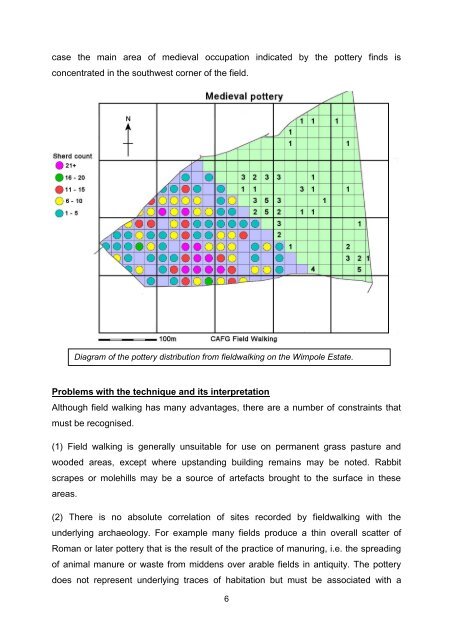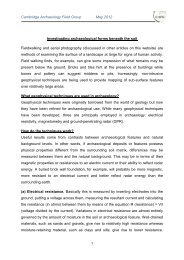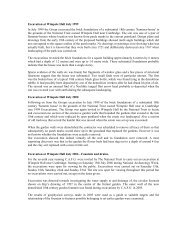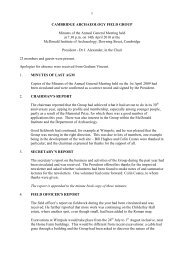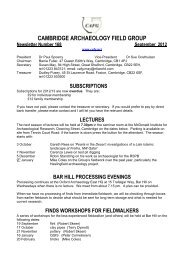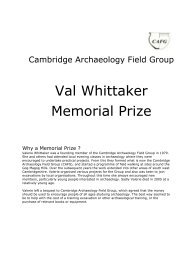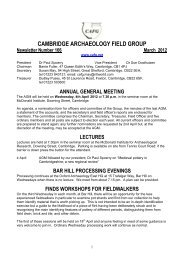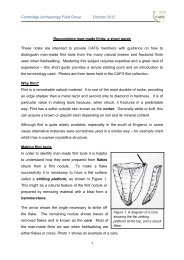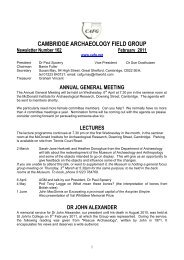Cambridge Archaeology Field Group May 2012 What is fieldwalking ...
Cambridge Archaeology Field Group May 2012 What is fieldwalking ...
Cambridge Archaeology Field Group May 2012 What is fieldwalking ...
You also want an ePaper? Increase the reach of your titles
YUMPU automatically turns print PDFs into web optimized ePapers that Google loves.
case the main area of medieval occupation indicated by the pottery finds <strong>is</strong><br />
concentrated in the southwest corner of the field.<br />
Diagram of the pottery d<strong>is</strong>tribution from <strong>fieldwalking</strong> on the Wimpole Estate.<br />
Problems with the technique and its interpretation<br />
Although field walking has many advantages, there are a number of constraints that<br />
must be recogn<strong>is</strong>ed.<br />
(1) <strong>Field</strong> walking <strong>is</strong> generally unsuitable for use on permanent grass pasture and<br />
wooded areas, except where upstanding building remains may be noted. Rabbit<br />
scrapes or molehills may be a source of artefacts brought to the surface in these<br />
areas.<br />
(2) There <strong>is</strong> no absolute correlation of sites recorded by <strong>fieldwalking</strong> with the<br />
underlying archaeology. For example many fields produce a thin overall scatter of<br />
Roman or later pottery that <strong>is</strong> the result of the practice of manuring, i.e. the spreading<br />
of animal manure or waste from middens over arable fields in antiquity. The pottery<br />
does not represent underlying traces of habitation but must be associated with a<br />
6


